You don’t have to be an expert palaeontologist to find fossils of dinosaurs and other prehistoric creatures.
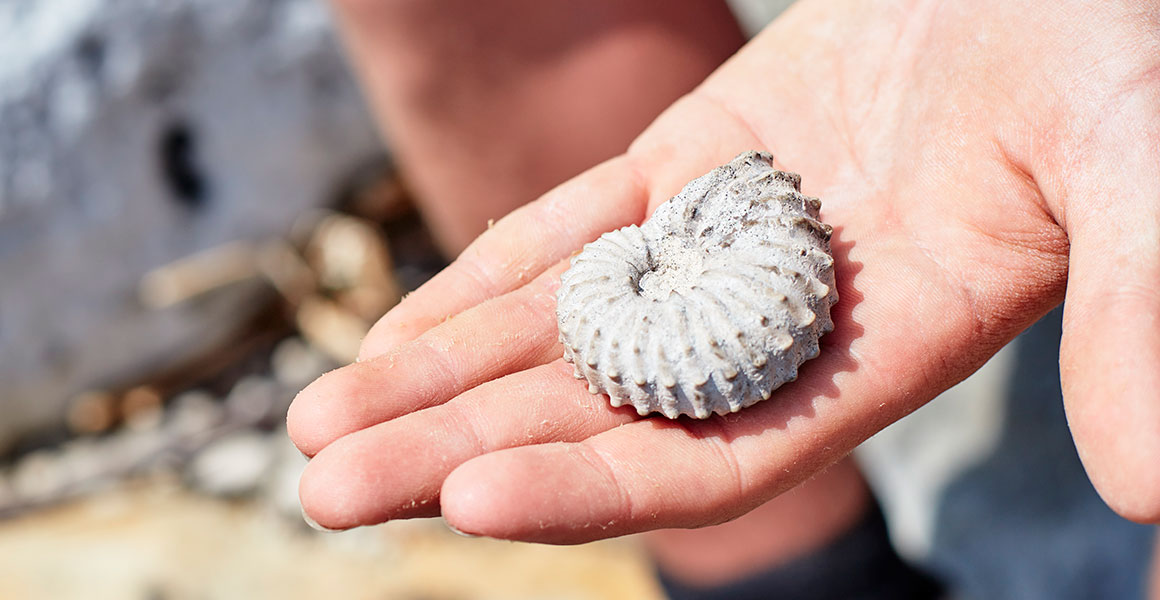
An ammonite found at Watershoot Bay, on the Isle of Wight, by fossil collector Jack Wonfor.
We spoke to Jack Wonfor from Wight Coast Fossils on the Isle of Wight to find out everything you need to know as a first-time fossil hunter on the island.
How to get started
Choosing the right location is the first step in a successful fossil hunt. Once you’re in a good spot, fossil hunting is a relatively easy hobby to get the hang of.
Isle of Wight local Jack is an advocate for his area, and you can’t blame him for his allegiance to the island. With rocks spanning millions of years of geological time and the ocean steadily eroding the island’s 57 miles of coastline, the Isle of Wight is one of the UK’s best fossil hunting locations.
There’s something for everyone, from beginners to seasoned professionals.
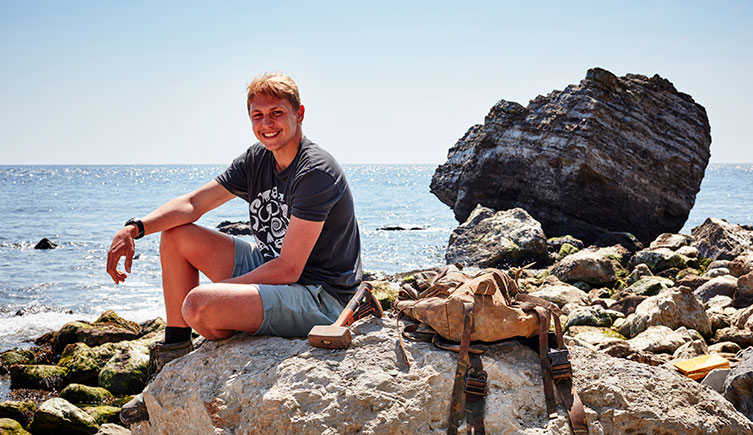
Jack Wonfor is a fossil collector and co-founder of Wight Coast Fossils, a company that runs fossil hunting experiences in a variety of locations around the Isle of Wight.
If you’ve never looked for a fossil before, Jack suggests that the best way to start is to simply give it a go.
‘Even if you don’t really know what you’re looking for, just by picking rocks up on the beach on the Isle of Wight, you’re almost guaranteed to find a fossil,’ he explains.
‘Some beaches are better than others, depending on what the cliffs are made up of, but on most beaches you're likely to find a fossil. This includes every beach if you’re counting flint fossil sponges.’
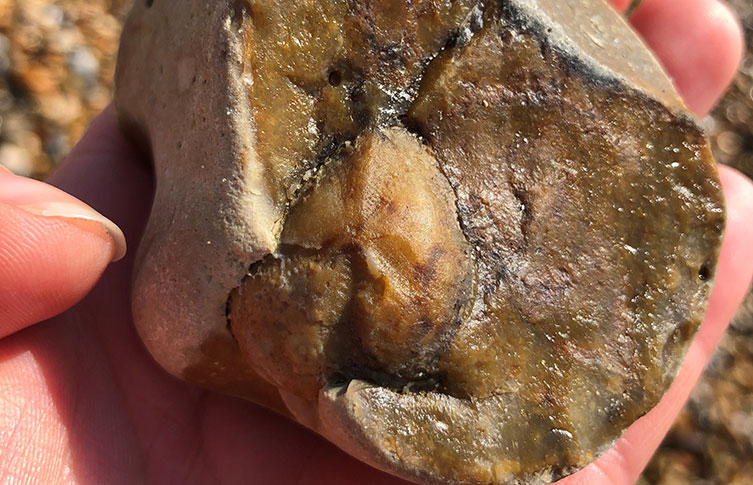
A fossilised sea urchin found on Compton Bay, a beach on the southwest coast of the Isle of Wight.
‘The key thing is just going out and looking for stuff,’ says Jack. ‘The more you do, the more you get used to what a fossil is and what isn’t, and the sorts of things to be looking out for.’
‘Once you know what to look for then you very easily find fossils on lots of beaches. When I was younger I would pick up a lot of things that weren’t fossils. It’s just one of those things that comes with practice.’
If you’re not feeling confident in your chances of finding fossils on your first outing, you could choose to be guided by an expert. There are plenty of companies and organisations that offer fossil walks and experiences around the UK, including with Wight Coast Fossils, Dinosaur Isle Museum and the UK Association of Fossil Hunters.
Where should you look for fossils?
Looking for a particular type of fossil? Check out our guide to fantastic fossils in the UK and where to find them.
If you’re looking for fossil hunting spots near you, Jack recommends this location guide by the UK Fossils Network, which also highlights what look out for in each area.
What kinds of fossils will you find?
What fossils you’ll find really depends on where you are and how old the rocks are.
If you are hunting for dinosaurs, the Isle of Wight is a great place to start, with more of these prehistoric reptiles here than anywhere else in the UK. More than 20 types of dinosaurs have been found on the island so far.
The Isle of Wight is sometimes called Dinosaur Island but there’s much more to find here than just prehistoric reptiles, with fossils 130 million years old through to much more recent Ice Age animal remains.
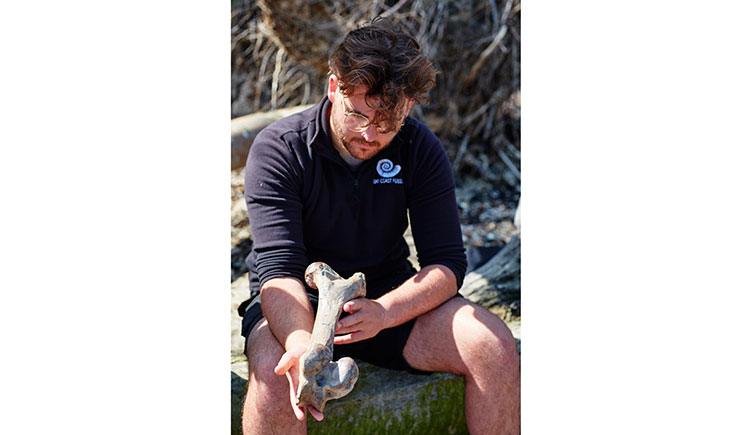
One of Jack’s fellow Wight Coast Fossils guides Theo shows off an approximately 115,000-year-old steppe bison femur he found on Thorness Bay. These animals are some of the most common Ice Age mammal fossils found on the Isle of Wight.
One of Jack’s most exciting finds, for example, was a 10,000-year-old horse skull.
‘I was on the north coast with one of our other guides, Theo. I was walking along and sticking out of almost knee-deep water was the top of a skull. I bent down to pick it up and it was a complete Ice Age horse skull, with all the teeth and absolutely perfect,’ he recalls.
‘It’s not often that you get that, so it was a really cool moment.’
We teamed up with Jack and his fellow guides from Wight Coast Fossils, Theo Vickers and Megan Jacobs, to get a taste of what else the Isle of Wight has to offer fossil hunters.
We visited three locations:
- Thorness Bay on the north-west coast of the Isle of Wight features rocks between 40-28 million years old. Theo helps us hunt for fossil shells, but this beach can also offer up fossils of alligators, fish, turtles, mammals and even neolithic flint tools used by the island’s prehistoric human residents.
- Watershoot Bay is a short walk from St Catherine’s Lighthouse, on the Isle of Wight’s southernmost point. It’s mostly made up of Late Cretaceous rocks that are around 95-99 million years old. Jack shows us this around spot, which is a great location for marine invertebrates such as ammonites, bivalves and brachiopods, as well as shark fossils.
- Compton Bay is on the island’s southwest coast and has rocks about 127-130 million years old. This is the best location for dinosaurs on the Isle of Wight, but as Megan shows us, there’s more than just prehistoric reptile bones washing out of the cliffs. Fossilised wood, sponges and footprints were among our finds here.
What equipment do you need to find fossils?
When it comes to the Isle of Wight, there’s fossil hunting for all levels of expertise. The great thing about getting started here is that you don’t need any specialist equipment. At a minimum, Jack recommends:
- A pair of sturdy walking boots, with good ankle support
- A rucksack to carry your finds in
- A first aid kit, just in case
While you might see professional palaeontologists in movies and documentaries geared up with hammers, chisels, spades and even power tools, as a beginner, you’ll probably have better luck without those.
From his own experience, Jack notes, ‘I used to do it when I was younger - I would bring a hammer and chisel, break down rocks and not find a lot. Then I’d walk along the beach and just find stuff.’
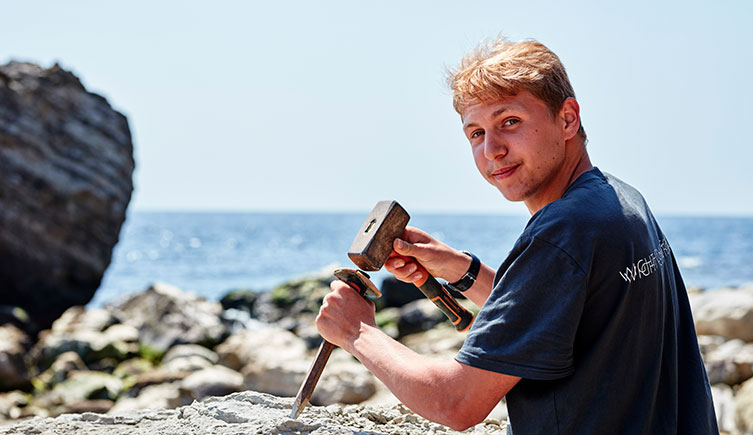
Leave the tools to the professionals. Jack is a fossil hunting expert and knows which rocks to dig into, but for your first fossil hunting adventure you won’t need a hammer and chisel.
There are places on the island where a hammer and chisel would come in handy, but it takes some expertise to know what you’re looking for. The harder blocks of sandstone at Chale Bay, for example, don’t always show clues of fossils hidden inside.
‘There are certain rocks that don’t have anything in, so you have to really know which rocks to break down. A lot of the time there’s not even an edge of a fossil showing, so it’s about recognising and knowing that particular type of rock.’
‘Unless you specifically know the rocks, a lot of the time you’re going to have more success by just looking for loose fossils on the beach.’
You don’t need to collect everything
Jack finds fossils every time he goes collecting on the Isle of Wight. But these days, unless the find is particularly exciting, he’ll leave it behind on the beach for a future fossil hunter.
‘You need to be respectful of the environment. Try not to leave any mess and leave some fossils for other people to find. You don’t necessarily need to collect everything,’ he advises.
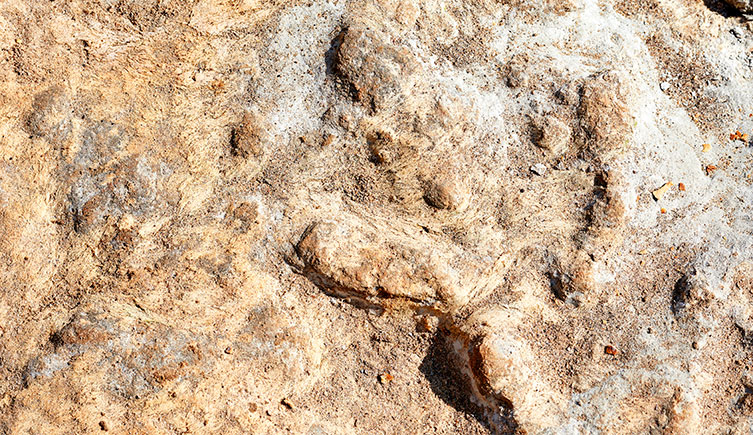
Can you spot the three-toed dinosaur footprint? This is one of many dinosaur tracks you can find at Compton Bay. These trace fossils are protected, so they can’t be collected by fossil hunters, but that also means everyone who visits the beach gets to enjoy them.
But if you’re just starting out with fossil collecting, how do you work out if you’ve found something exciting and worthy of collecting?
With practice and experience, you’ll be able to start identifying fossils from their locations, shapes and colours. For finds you’re not sure about, you could take them to a Museum to have them identified.
Fossil identification
Have you found a fossil and want to know what it is?
Get in touch with our Identification and Advisory service in the Angela Marmont Centre for UK Nature.
How to fossil hunt safely and legally
Permission and Law
You will need to ensure you have all appropriate permission and access rights with regards to the areas you visit and anything you extract or take away. Some lands are Sites of Special Scientific Interest, or SSSIs with extra restrictions.
Always look up and follow the rules for the specific areas you visit or those imposed by owners or controllers, which can include obtaining permission to access and collect in the area, avoiding disturbing wildlife, and recording what you found and where. In some places you can look but mustn’t collect anything.
This is a complex area of law, so if in any doubt seek advice.
In places where you are allowed to collect fossils on the British coastline, there is a code of conduct. Read this Joint Nature Conservation Committee guide before you head to the beach.
You will also need to follow a few basic rules to keep yourself safe on your adventures.
1. Cliffs
Cliffs can be unstable and unpredictable.
Be aware of the danger of falling rocks and make sure to always keep a safe distance away from the base of cliffs.
When moving along cliff edges, be aware that there may be no signs or clues of a sudden vertical drop at the cliff face, especially where coastal paths may have eroded away.
Never dig fossils directly out of cliffs, as this can make the cliff even more unstable and put you in a dangerous spot. Plus, to dig into cliffs, you would need permission from the landowner. Generally speaking, the person who owns the land atop the cliff, owns the cliff itself.
If you spot a fossil that you think may be exciting or important, report it to a Museum such as Dinosaur Isle on the Isle of Wight, or our identification experts in the Angela Marmont Centre for UK Nature.
If you can’t collect the fossil as it is still embedded in a cliff, make sure to take a photo, note the location and share this information with a Museum.
2. Rising tides
Check the high and low tide times before you head to the beach and keep a note of them with you.
Keep an eye on the tide throughout the day. In some areas it can rise much quicker than you might expect and could cut you off. This can leave you in a dangerous, possibly even life-threatening, spot. Make sure you always have a means of retreat should the tide start rising.
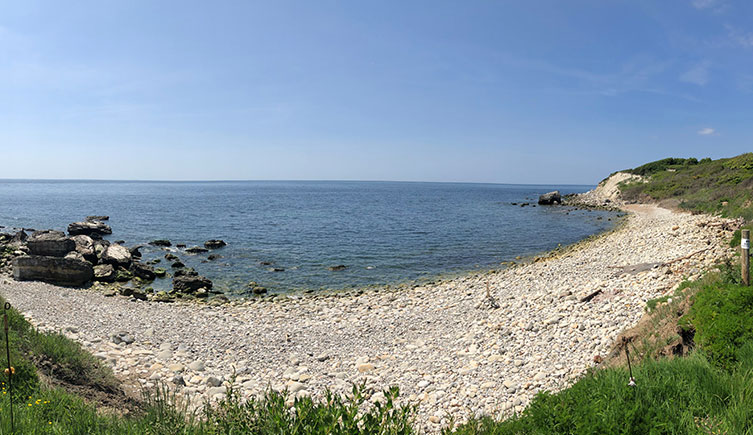
Watershoot Bay’s remote location, cliffs and unstable rocks mean you must take great care when fossil hunting here.
3. Slippery rocks
Rocks along the coastline can be very slippery and wobbly.
Walk cautiously over rocky patches, avoid stepping on rocks covered by seaweed and move at a sensible pace. Keep clear of moving rock falls and mudflows.
Make sure to wear sturdy walking boots with good ankle support. It’s also sensible to carry a first aid kit with you in case you or someone else slips and hurts themself.
4. Watch where you step
Along with unstable rocks, you might also find other trip hazards left behind on the beach, such as old fishing gear. Although uncommon, in some parts of the UK you could also even come across old unexploded ordnances.
Jack says, ‘You just need to watch where you’re stepping because you do get them on the island.’
5. Tools
On the Isle of Wight, the best tools for fossil hunting are your eyes.
In most places you won’t need a hammer to help you collect fossils. Many can be found loose on the beach and can just be picked up.
For more seasoned fossil hunters, for rocks where a hammer may be necessary to collect a fossil, make sure to wear eye protection while hammering.
6. Let someone know
If you’re going fossil hunting, always let someone know where you are going and what time you expect to return.
Take a mobile phone with you in case of emergencies, but remember, in some locations you may not have reliable service.
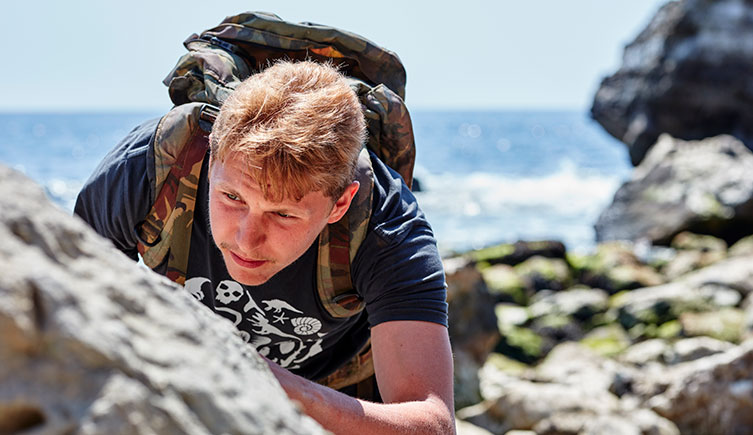
Jack’s interest in fossil hunting was ignited at the age of three when he stumbled across an ammonite in a rock pool.
Why should you try fossil hunting?
‘I think it’s a great thing to get into. You never know what you could find,’ says Jack.
‘Knowing you’re the first person to ever see and pick up a fossil is a really cool thing.’
‘Every single thing you find is a new record for science, so scientifically it’s great, but as a hobby it’s also great. You get outdoors into the fresh air in a nice coastal setting’.
‘You can spend hours fossil collecting, looking amongst the shingle pebbles - it’s really exciting!’
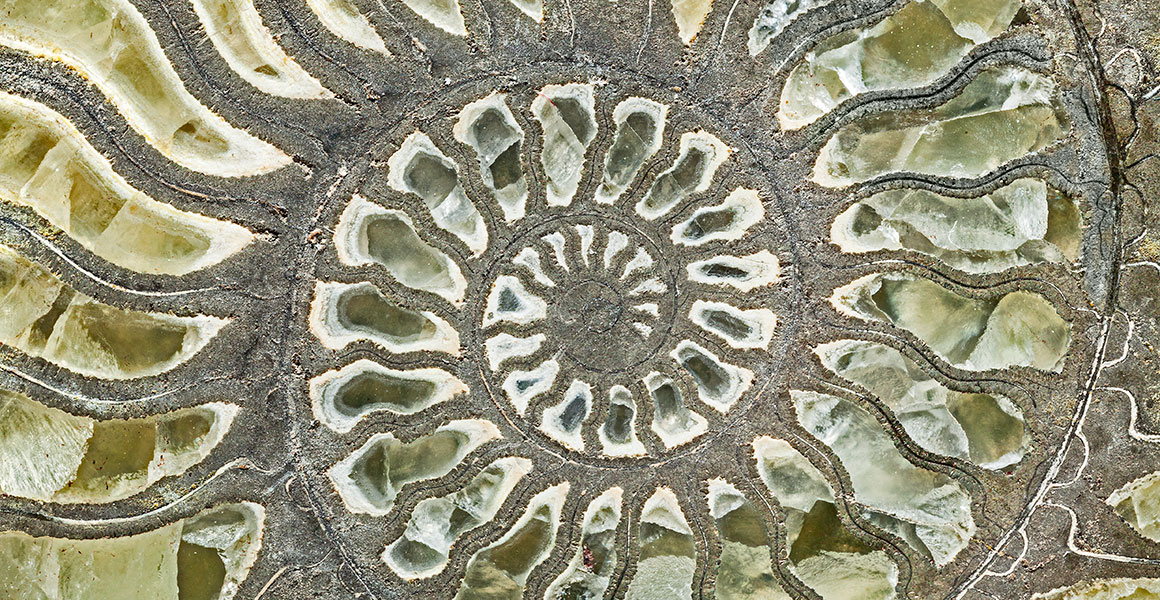


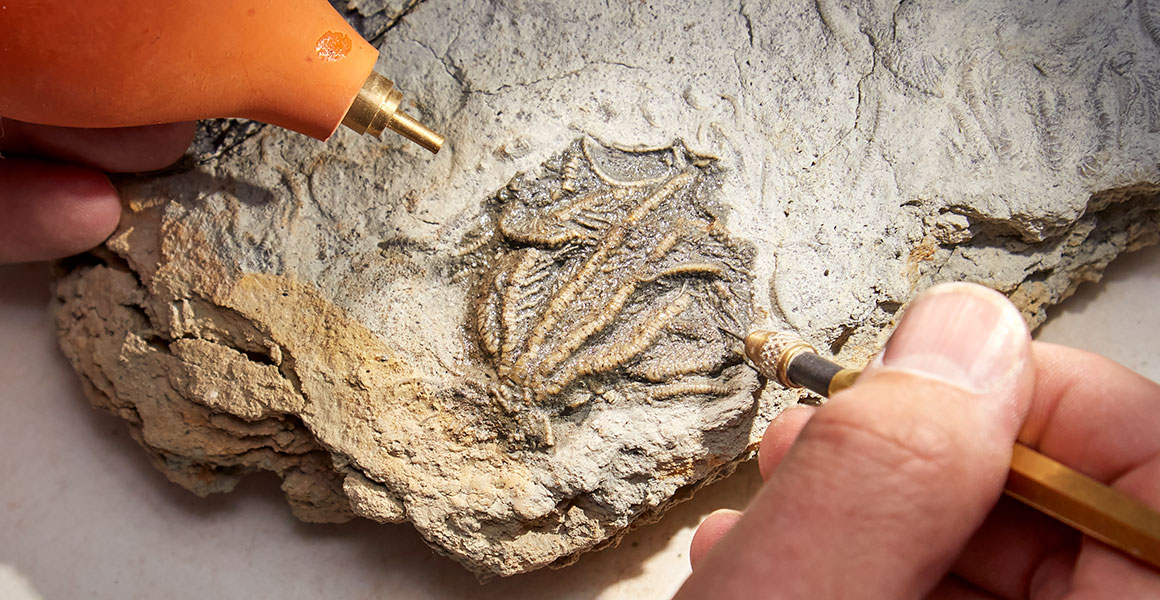
Don't miss a thing
Receive email updates about our news, science, exhibitions, events, products, services and fundraising activities. We may occasionally include third-party content from our corporate partners and other museums. We will not share your personal details with these third parties. You must be over the age of 13. Privacy notice.
Follow us on social media